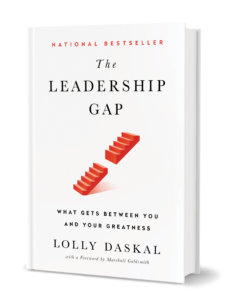
As you gather experience as a leader, over time you acquire a tool kit of techniques and strategies that serve you well. Then when a conflict hits and you’re under the wire, you don’t have to reinvent the wheel but can instead turn to something tried-and-true.
One of the techniques you may find yourself turning to often is problem solving–so much so that developing a reliable method of problem solving is critically important. Details and personalities can vary widely from one situation to another, so the most effective problem solvers rely on a mental model to help them come up with the best solutions.
Try this simple six-step model the next time a problem crops up. As you work with the model, you may find ways to tailor it to your situation and way of thinking. That’s fine, of course. The more you refine it, the better it will work.
Step 1: Understand the problem.
Most people start out just looking for a solution. Any solution. But it’s best at the beginning to make sure you have a solid grip on the relevant facts and issues. Gather all available information; think about the situation from all perspectives. Make a list of those involved, along with their needs and expectations.
Step 2: Define the problem.
Ask yourself the same “Five Ws and an H” that journalists use:
- Who is involved?
- What happened?
- When did it happen?
- Where did it happen?
- Why did it happen?
- How did it happen?
Once you have the information, make notes. Document your sources, and mark any discrepancies in their versions of the story.
Step 3: Know your role.
Reflect on the information in light of your own standards and values. Is there really a conflict, or is it just a bunch of noise? Does something need to be resolved? Do you have to get involved? Can you leave this up to the parties involved? Think clearly about whether and how you wish to take a stand on the issue.
Step 4: Identify the root causes.
List all the underlying factors you can think of that contributed to the problem–system issues, personalities, old grudges and simmering conflict, plain bad luck. Then list them in rank order according to facts and observation, and spend some time thinking about where the problem really lies.
Step 5: Select a solution.
As you weigh possible solutions, keep in mind that you’re aiming for something that
- Satisfies everyone involved
- Makes it so people feel understood and heard
- Is sustainable
- Worthy of the situation
- Compelling enough to get complete buy-in
- Compatible with your standards and values
Step 6: Check in and monitor.
After you’ve selected a solution and implemented it, continue to monitor the situation and check in occasionally to ensure that the problem has truly been resolved.
A system for problem solving can help you avoid unnecessary conflicts, disputes, and friction. You can know that you’re making decisions based on facts, not personalities or snap judgments, and you can give less of your precious time to putting out fires. Try this technique and let me know what happens.
N A T I O N A L B E S T S E L L E R
THE LEADERSHIP GAP
What Gets Between You and Your Greatness
After decades of coaching powerful executives around the world, Lolly Daskal has observed that leaders rise to their positions relying on a specific set of values and traits. But in time, every executive reaches a point when their performance suffers and failure persists. Very few understand why or how to prevent it.
Additional Reading you might enjoy:
- 12 Successful Leadership Principles That Never Grow Old
- A Leadership Manifesto: A Guide To Greatness
- How to Succeed as A New Leader
- 12 of The Most Common Lies Leaders Tell Themselves
- 4 Proven Reasons Why Intuitive Leaders Make Great Leaders
- The One Quality Every Leader Needs To Succeed
- The Deception Trap of Leadership
Photo Credit: Getty Images
Of Lolly’s many awards and accolades, Lolly was designated a Top-50 Leadership and Management Expert by Inc. magazine. Huffington Post honored Lolly with the title of The Most Inspiring Woman in the World. Her writing has appeared in HBR, Inc.com, Fast Company (Ask The Expert), Huffington Post, and Psychology Today, and others. Her newest book, The Leadership Gap: What Gets Between You and Your Greatness has become a national bestseller.
Nevin Danielson
01. Feb, 2019
I think it’s really hard to generalize an approach to problem-solving when there are so many different types of challenges. Regardless, this is a very helpful list. Thanks.
My expectation when I was just at the preamble was that an early step in the advice was going to be to “Frame the Problem” or perhaps, “Define the Desired Outcome.”
The advice you share – to not start with the solution – is essential in my mind. It still takes me where I was expecting. I find many of the best solutions that I or my colleagues have generated are when we objectively, plainly describe what result is desired. It’s often easier to identify a wider range of contributing factors or to recognize solutions that are too narrow or incomplete when we step back and say what is needed.
“Communication sucks” might be the problem.
“Sales has timely, actionable advice from Marketing to better address customer needs” is a defined outcome in need of a solution, but it is direct, measurable and opens up plenty of room to find creative solutions.